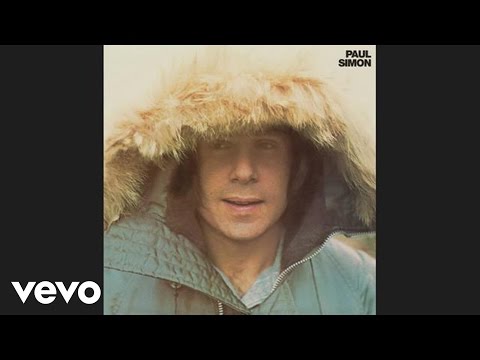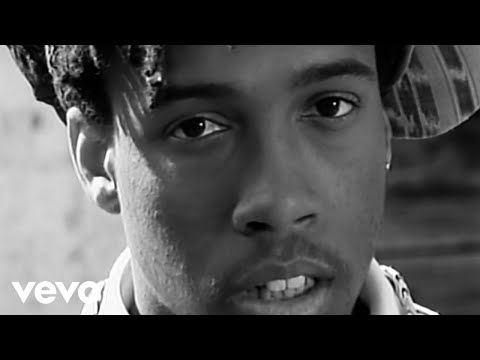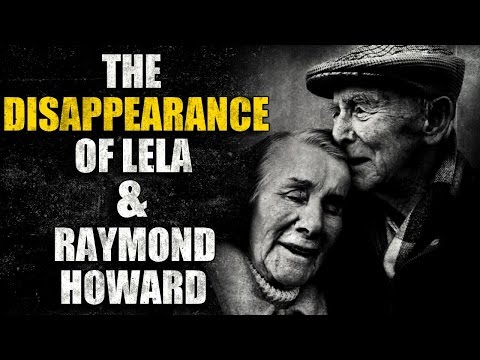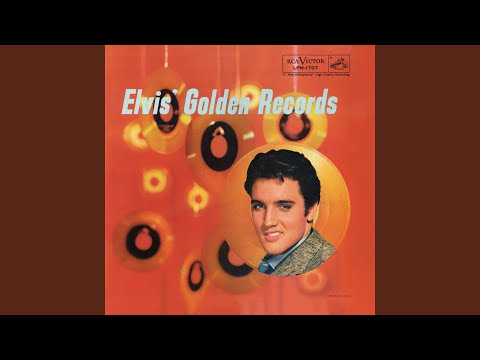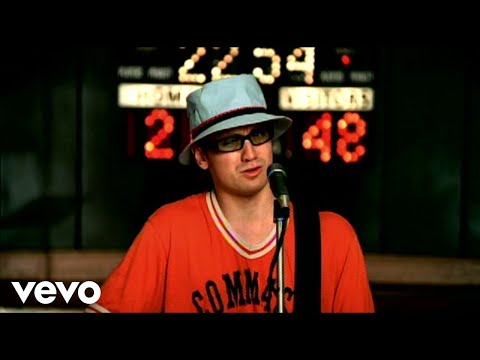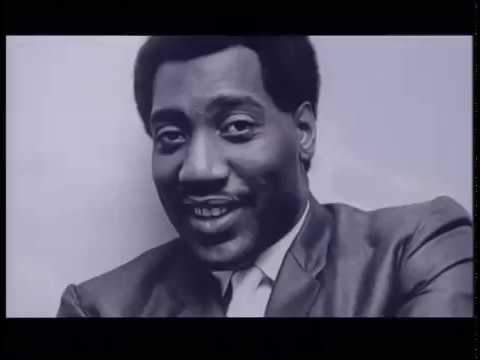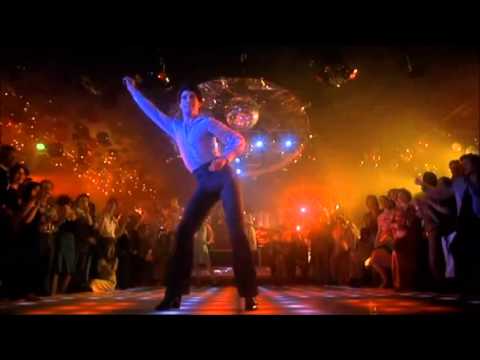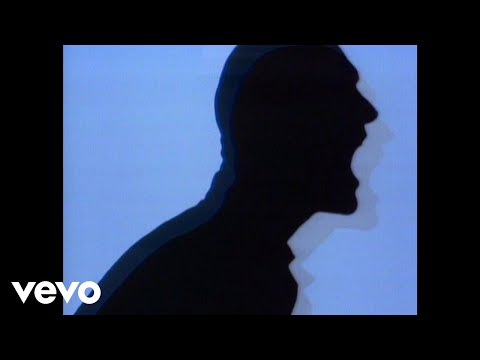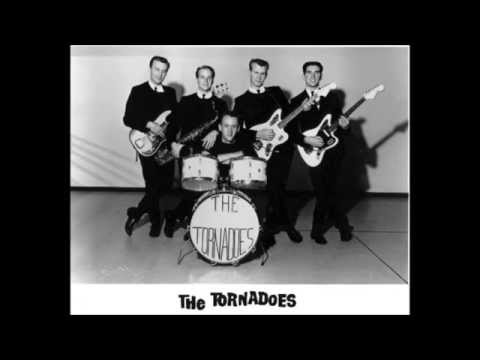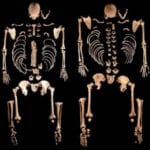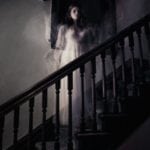So it should not be a surprise that some of this music is shaped by actual loss of life. Next time these 10 hit songs pop up on the radio, try to remember that someone really died for these to exist.
10 Three Animals Died For Paul Simon’s ‘Mother And Child Reunion’
Long before he was copying African music, Paul Simon tried his hand at imitating Jamaica. The end result was the 1972 hit “Mother and Child Reunion.” As the first single released following his breakup with Art Garfunkel, the song’s success was key to launching Simon’s equally famous solo career. Charting at No. 4, “Mother and Child Reunion” is now considered one of Simon’s biggest and best songs. Part of what drove the song’s popularity was the charming reggae riffs and cryptic lyrics about the “strange and mournful” day when the mother and child shall meet again. The cheery tune hides a dark past, while the philosophical and introspective lyrics are actually a dumb joke. Those who spent hours decrypting the song’s deeper meaning will be disappointed to discover that the real-life inspiration was something as insignificant as a Chinese menu. Simon wrote the song after he saw a chicken-and-egg dish called “mother and child reunion.” He thought the rather dark pun was so hilarious that he somehow had to work it into a title.[1] Though the title may have been a joke, the inspiration was certainly not. In 1972, Paul Simon experienced the first real loss in his life when his beloved dog died. In the wake of losing a pet, his mind naturally turned to death. Seeing the menu item inspired him to take a lighter view of death. That lesson is reflected in the song as the morbid narrative is masked with a fun melody.
9 The Kiss Of Death In ‘Detroit Rock City’
If there is any band that one would think would not talk about death, it’s Kiss. With their busy schedule where they rock and roll all night and party every day, there is not a lot of time for mourning. It is hard to have existential woes in kitty makeup. So it is no surprise that their darkest song is still an arena rock jam. The song tells everyone to get off their feet, but it is really about how bad partying can be. Most people are probably more familiar with the single meant for radio airplay. However, if one listens to the album version, the song’s meaning becomes obvious. The song opens with a news announcement about a fatal car accident. The rest details the last few minutes of a fan racing to a Kiss concert. High and drunk, the guy gets in a head-on collision with a truck and dies. The morbid lyrics were based on a true story. Kiss guitarist Paul Stanley wrote the song after reading a newspaper article that mentioned a deadly car crash outside a Kiss concert in Charlotte. Out of respect for how the city helped the band in its early days, the titular city was changed to Detroit.[2]
8 The Funeral That Inspired Arrested Development’s ‘Tennessee’
It might have been short-lived, but there was a moment in 1992 when Arrested Development seemed like the biggest rap group in the world. Their music was defiantly slick, polished, and jazz-influenced in an era dominated by the gritty realism of the emerging gangsta rap. Watch this video on YouTube The band was both commercially and critically lauded. Their album 3 Years, 5 Months and 2 Days in the Life Of . . . was voted the greatest album of the year in Village Voice’s coveted Pazz & Jop poll. In 1993, Arrested Development won two Grammys—for Best New Artist and Best Rap Performance by a Duo or Group. Legions of fans and groups as varied as the Fugees, OutKast, and the Black-Eyed Peas have all cited the band as a major influence. None of this would have been possible without their debut song, “Tennessee.”[3] Hidden under booming bass, “Tennessee” is a deeply religious song. That makes sense because it was written while mourning. Lead singer Speech (real name Todd Thomas) had just gone to the titular state to bury his grandmother. As she had helped to raise him, Speech was very upset about losing his favorite grandmother. Though a somber affair, the funeral gave Speech a chance to reconnect with his brother Terry Thomas. They hung out until both returned to their respective colleges. One week later, Terry had a severe asthmatic reaction. He died at 29. Heartbroken from losing two of his closest family members back-to-back, Speech sat down to compose his thoughts. Treating the song as a prayer to God, Speech says that the lyrics just poured out of him in a stream of consciousness. The song’s references to Speech’s grandmother and brother were his attempt at closure. Speech’s private crisis resonated with the American public. “Tennessee” went to No. 6 on the charts and propelled Arrested Development to fame.
7 The Sad, Misguided Trip Behind Fastball’s ‘The Way’
On June 29, 1997, elderly couple Raymond and Lela Howard drove from their house in Salado, Texas, to attend an event 24 kilometers (15 mi) away in Temple. The two never returned home. After they made it to Temple, they drove hundreds of miles away toward Arkansas. By this point, their family had reported them missing. In the span of an hour, they were pulled over twice by police officers for traffic violations. Neither officer knew that a missing persons bulletin had been issued and let them drive off. The couple was never seen alive again. Journalist Denise Gamino wrote an article about the disappearance on July 2. The details show how mentally unstable the couple was before the trip. Both in their eighties, the pair’s medical conditions left them prone to confusion. Even though it was July, their calendar was still set on February. Their pet cat was left behind with no food. There was no evidence that they planned to go on a trip. Tony Scalzo, Fastball’s lead singer, read the article and gave the story an optimistic spin. The final product was the jangling power pop classic “The Way.” Instead of a couple with Alzheimer’s driving off toward oblivion, the duo in “The Way” are leaving their daily troubles for one last great joyride.[4] Scalzo recorded a demo in a few hours but shelved the song until the band’s 1998 album, All the Pain Money Can Buy. Like a few other entries, the melody hides a surprisingly dark backstory. Unlike the others, Fastball had no idea how the dark the story was going to be. Two weeks after the song was recorded, the bodies of Raymond and Lela Howard were discovered. Evidence showed that they had crashed their car into a ravine the same day that the article reported them missing.
6 ‘Heartbreak Hotel’ Was Based On Real Heartbreak
“Heartbreak Hotel” is the hit record that launched Elvis Presley and basically everybody else. For a generation of people, it was one of the first rock songs they had ever heard. John Lennon, George Harrison, Keith Richards, Elton John, Paul McCartney, and Robert Plant have all cited “Heartbreak Hotel” as one of the main reasons they got into rock and roll. It even got the presidential seal of approval when Bill Clinton performed it during his ridiculous appearance on The Arsenio Hall Show. Quite the legacy for a song about complete destitution. In November 1953, Alvin Krolik was having a rough month. His wife had left him. To compensate, he committed a series of robberies around Chicago. He was immediately overcome with grief. Krolik walked into the police department and confessed all his crimes. To help others turn their lives around, he wrote a memoir. Newspaper affiliates were so moved by his honesty that they published sections of his autobiography. Across the nation, headlines read, “This is the story of a person who walked a lonely street.” The judge was equally moved and issued a fairly minor sentence. In early 1955, he was a free man. He moved to Tucson, Arizona. There, he started painting murals for Franciscan monks. Krolik’s redemption seemed secure.[5] Then, on August 20, he relapsed. Krolik tried to rob a liquor store in El Paso, Texas. Owner and operator Delta Pinney was used to people robbing his store. He was also used to taking care of those individuals. Before Krolik, Pinney had shot eight would-be robbers. Krolik was number nine. Pinney shot Krolick multiple times, killing him. His obituary featured the same evocative phrase that had made him famous two years earlier. Florida songwriters Tommy Durden and Mae Boren Axton somehow came across the story a few weeks later. The opening line of the song built off the phrase in his obituary. The rest of the song stemmed from that.
5 A Satanic Murder Inspired ‘Teenage Dirtbag’
Being a one-hit wonder has to be surreal. It is even more bizarre when you are only known for a song like “Teenage Dirtbag.” Wheatus’s lone hit is a very odd song. There are car crash sound effects, random record scratches, and high-pitched nasal singing by the lead vocalist. Watch this video on YouTube All those noises are for a song about a shy kid who tries to talk to a girl he has a crush on. For an already offbeat song, it is appropriate that its origins are equally weird. Wheatus’s lead singer Brendon Brown grew up on Long Island. When he was 10, he knew an area kid named Ricky Kasso. By 1984, everybody in America would know Kasso. Before he made national news, he was famous in his town as the local drug dealer. He was nicknamed the “acid king” because of his affinity for LSD. Kasso was also known for being a practicing Satanist. He famously spent Halloween hanging out at the house allegedly haunted in The Amityville Horror. He did not have a lot going for him. One night, Kasso’s drug habit got the better of him. He had recently been feuding with his friend Gary Lauwers after Lauwers stole drugs from Kasso. The two lit a bonfire and took mescaline. According to Kasso, Satan himself took the form of a crow and commanded Kasso to kill Lauwers. Kasso stabbed Lauwers up to 36 times in the face and chest. For the next two weeks, Kasso took people out to show them the body. Eventually, somebody called the cops. When Kasso was arrested, he happened to be wearing an AC/DC T-shirt. At the height of the Satanic Panic, this fueled complaints that rock music was linked to the Devil.[6] However, this incredible backstory is barely present in the song. The only detail that actually made it into the lyrics is that Wheatus’s lead singer Brendon Brown liked heavy metal. That is why he mentions Iron Maiden tickets. It is almost impressive that Wheatus could turn an occult sacrifice to Satan into a story about a guy who is nervous about the prom.
4 Otis Redding’s Death Saved ‘(Sittin’ On) The Dock Of The Bay’
Although Otis Redding is considered one of the greatest soul singers of all time, his legacy will always be “(Sittin’ on) the Dock of the Bay.” Today, the song is heralded as one of the best ever recorded. Rolling Stone magazine ranked it as the 28th greatest song of all time. After struggling for acceptance by mainstream audiences for years, Redding never got to experience the biggest hit of his career. He has the dubious honor of being the first artist to get to No. 1 posthumously with “(Sittin’ on) the Dock of the Bay.” However, the song would have never been released if the soul legend had still been alive. In 1967, Otis Redding was mending from recent throat surgery. Unable to sing with his usual over-the-top style, he penned an introspective, reserved ballad. Unsure how to market the song, Al Bell, record producer for Stax, sat on the ballad. Upon hearing it for the first time, Bell said, “I don’t know if we can ever release this song.”[7] Then, on December 10, 1967, Redding died in a plane crash. He was only 26 years old. The nation was in mourning. To capitalize on the interest, the record company needed to quickly release a track. After making only minor edits like overdubbing and adding sound effects of seagulls and waves, the song was immediately sent out. Within three months, it was the biggest song in the country. Redding’s death even changed the track itself. One of his trademarks was to improvise over the end of the song. The day they were recording, Redding could not think of anything to scat. Instead, he just whistled the melody as a temporary placeholder. He planned to head back to the studio and add lyrics when he thought of them. Redding took a break between sessions to head out on tour. Sadly, he died before he could ever return. In the rush to release the song, the record company left it unfinished. Not willing to be disrespectful to the singer by adding extra vocals, Stax kept the now iconic whistling solo.
3 ‘Stayin’ Alive’ Exists Because The Drummer’s Mom Did Not
It is ironic to see “Stayin Alive” on a list of songs about death. Nothing about the Bee Gees has ever made sense, though. Nobody with a falsetto that high should have that much chest hair. Watch this video on YouTube The Bee Gees may have had nothing to do with the start of disco, but they saved it from extinction. By 1977, the genre was fading. Propelled by the success of “Stayin Alive,” the soundtrack to Saturday Night Fever, for better or worse, rescued the genre. At one point, the record sold 200,000 copies a day. At the time, it was the best-selling album in history. “Stayin Alive” was not only popular but it was also surprisingly influential. Part of the reason the song became so big was the infectious drumbeat. This was the first instance of a drum loop on a pop record. The innovation was born out of necessity. The mother of the Bee Gees’ longtime drummer Dennis Bryon died during the recording. Bryon had to fly back to England. Without a drummer, the Bee Gees just decided to reuse the drums sampled on an earlier hit “Night Fever.” Six meters (20 ft) of tape was stretched out, and the audio was isolated. Even though there was technically no drummer, they credited the drums to “Bernard Lupe” as a nod to the famous session drummer Bernard Purdie. Following the song’s success, the Bee Gees have said that they got calls from other bands asking for Bernard Lupe to play on their tunes.[8] As unfortunate as it was that Bryon’s mother died, her death may not have been in vain. Thanks to her son’s work, she might have actually saved lives. The drumbeat to the song is close to 110 beats per minute. As this is in the ideal window for a human heartbeat, CPR instructors use this song to train people. More than just in name, the disco hit has been helping people stay alive for decades.
2 The Genocide Behind ‘Beds Are Burning’
In 1987, there was a weird blip on the charts. In an era of synthpop and bland easy listening, Australian rockers Midnight Oil scored their only hit with “Beds Are Burning.” The song is a righteous number with a boppy groove. Despite how upbeat the song is, it still is surprising that a leftist political band from the southern hemisphere could have a Top 20 hit in America. Watch this video on YouTube Nevertheless, the song became a staple of college radio. The Rock and Roll Hall of Fame listed it as one of the 500 songs that shaped rock and roll. Its lasting popularity in America is curious because the lyrics detail two of the darkest events in Australian history. In the 1950s, Blue Streak ballistic missile tests were conducted in the Australian outback. However, the trajectory of the missiles would cause them to land where people were already living. As a result, the government forced the Aboriginal people off the land. Those who were systematically removed were placed in government camps. Conditions in these camps were deplorable. Hundreds died from easily treated diseases such as hepatitis or meningitis. The camps also forcibly removed thousands of Aboriginal children from their parents. The children were placed into reeducation centers and never reunited with their parents. This is now known as the “Stolen Generation.”[9] The title of the song refers to another blight on Australian history, the 1963 burning of Mapoon. As with the Blue Streak crisis, the government tried to force Aboriginal people from their land. This time, however, they refused to go. Even though the Aboriginal people had every right to the land, the government really wanted to build a mine there. Instead of negotiating, the government just set all the houses and churches on fire. The titular beds are not a metaphor. They really were burning.
1 The Seance That Launched The British Invasion
Many people struggle to name the first British band to hit No. 1 on the Billboard Hot 100. The Beatles are probably their first instinct. However, the right answer is the hugely influential but largely forgotten band The Tornados. Two years before the Beatles even appeared on the charts, the Tornados were sitting at the top with their 1962 smash hit “Telstar.” Like its namesake satellite, “Telstar” was innovative and truly otherworldly. Creator Joe Meek was a renegade producer who accomplished an amazing amount in a short period of time. He was the first independent producer to have a No. 1 hit. “Telstar” was also one of the first mainstream songs to use electronic instruments. Meek’s space age records are now considered some of the earliest concept albums. The experimental pop music featured prototypical examples of overdubbing, sampling, and reverb. Yet the career that captured scientific optimism at its best was financed with money from dark mysticism. Meek could not have done any of this without his earlier success with “Johnny Remember Me.” Sung by famous British actor John Leyton, “Johnny Remember Me” was a huge hit in England. As the story goes, the song was written by Geoff Goddard, Joe Meek, and perhaps the ghost of Buddy Holly. Meek was friends with Holly in the late 1950s. Meek even warned Holly that he was going to die on February 3, 1958. Holly actually died one year later to the day. Meek never got over the guilt and dedicated his life to talking to the dead. In a seance, Goddard and Meek summoned Holly’s spirit to write the song. Supposedly, Holly’s ghost guided their hands on a Ouija board and told them the song was going to be a No. 1 hit. The ghost was right. The song’s success made Meek a star overnight and changed music forever.[10] Meek’s propensity for hearing voices had tragic consequences of its own. Already insecure for being a closeted gay man, Meek suffered depression later in life. Due to mental problems, he wrongfully believed that his landlady was bugging his studio to steal his ideas. In 1967, Meek shot his landlady and himself in a murder/suicide. He died on February 3, the exact day he warned Buddy Holly about. Meek was 37. Nate Yungman likes music a lot more than he likes death. You can follow him on Twitter @nateyungman. If you have any questions or comments, you can send them to his email at [email protected].
